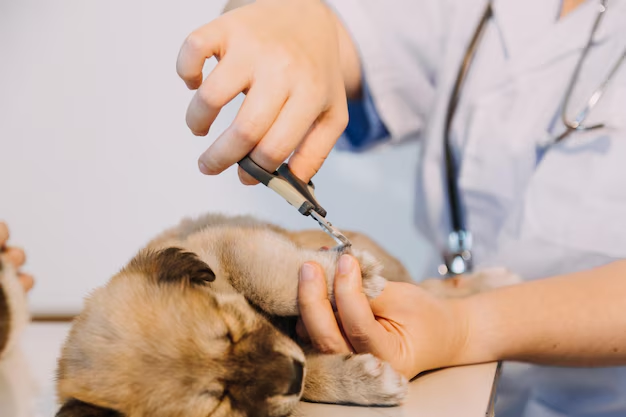Recognizing Cataracts in Dogs: Signs, Symptoms, and What to Do Next
Our furry companions brighten our days, providing unconditional love and companionship. As they age, it's essential for owners to be mindful of health changes that may occur. One such concern is cataracts, a common eye condition in dogs that can impact their vision and quality of life. But how can you tell if your dog is developing cataracts? In this comprehensive guide, we'll explore how to recognize the signs, understand causes, and consider potential next steps to support your beloved pet.
Understanding Cataracts in Dogs
Cataracts develop when the lens of the eye becomes cloudy, leading to decreased vision. This condition can vary in severity from mild cloudiness to complete opacity, where the dog may not see at all through the affected eye. Early detection is crucial, as it helps ensure timely intervention and management.
What Causes Cataracts in Dogs?
Several factors can contribute to the development of cataracts:
- Genetic Predisposition: Some breeds are genetically prone to cataracts, including Cocker Spaniels, Poodles, and Labrador Retrievers.
- Diabetes: Diabetic dogs are at a higher risk of developing cataracts, often rapidly.
- Aging: Like humans, older dogs are more prone to cataracts as parts of their body, including their eyes, begin to change with age.
- Ocular Injuries: Trauma or injury to the eye can induce cataract formation.
- Other Medical Conditions: Some conditions, such as certain metabolic disorders, can lead to cataract development.
Understanding these causes can prepare owners to look for early warning signs and discuss preventive measures with a veterinarian.
Spotting Cataract Symptoms: Dogs' Warning Signs
Visual Clues
A few tell-tale signs can indicate the presence of cataracts in dogs:
- Cloudy or Bluish Eyes: One of the most visible symptoms of cataracts is a change in eye appearance. The lens may take on a cloudy or bluish-gray tint.
- Changes in Behavior: If your dog begins bumping into furniture, becomes hesitant in unfamiliar environments, or shows signs of heightened anxiety, it may struggle with impaired vision.
- Avoidance of Bright Light: Cataracts can cause sensitivity to light. You may notice your dog squinting or avoiding brightly lit areas.
Behavioral Changes
Dogs are creatures of habit. Therefore, noticeable changes in their daily behavior can signal vision problems:
- Reluctance to Move: A dog that is suddenly hesitant to navigate spaces it once knew well could be experiencing eye-related difficulties.
- Difficulty Finding Toys or Food: Misplacing or ignoring toys, or needing more time to locate food could indicate changes in their ability to see clearly.
- Changes in Interaction with Humans: Dogs with cataracts might become more clingy or follow their owner more closely to feel secure.
When to See a Veterinarian
If you suspect your dog may have cataracts, scheduling a veterinary examination is an important step. A professional can provide an accurate diagnosis and recommend appropriate actions. Early identification not only helps slow progression but also provides more treatment options.
Diagnostic Process
During a veterinary visit, here’s what might occur:
- Eye Examination: A vet will closely examine your dog’s eyes, using specialized tools to inspect for cloudiness and check overall eye health.
- Additional Tests: In some cases, blood tests or additional diagnostics are necessary to rule out underlying conditions like diabetes.
- Referral to a Specialist: If significant cataracts are found, a vet may advise visiting a veterinary ophthalmologist for a more detailed assessment.
Treatment Options and Management
While cataracts are not preventable, management and treatment can improve quality of life and preserve vision where possible.
Non-Surgical Management
Managing cataracts without surgery involves addressing underlying conditions and providing supportive care:
- Blood Sugar Control: For diabetic dogs, maintaining proper blood sugar levels can slow the progression of cataracts.
- Anti-inflammatory Medications: Vets might prescribe medications to help with inflammation and discomfort.
- Vision Aids: Owners can aid navigation by maintaining familiar home layouts and using strategic lighting.
Surgical Treatment
Surgery is currently the most effective approach for restoring vision in dogs with cataracts. A procedure known as phacoemulsification involves removing the cloudy lens and, often, placing an artificial lens.
- Pre-surgical Evaluation: A comprehensive assessment determines whether a dog is a suitable candidate for surgery.
- Post-operative Care: Successful surgery requires diligent aftercare, including follow-up appointments and adhering to prescribed medications.
Caring for a Dog with Cataracts
Living with a dog with impaired vision involves some adjustments to ensure comfort and safety:
- Create Safe Spaces: Remove hazards, reduce clutter, and create consistent, open paths.
- Use Vocal Cues: Engage with your pet using voice commands and calls to assist in navigation.
- Enrichment with Scent and Sound Toys: Provide toys that make noise or squeak, and consider scent-based play to enhance non-visual interaction.
🐾 Essential Takeaways for Dog Owners
Here's a quick overview to help manage cataracts in dogs:
- 🕵️♂️ Watch for Signs: Look for cloudy eyes and changes in behavior as primary symptoms.
- 👩⚕️ Consult a Vet: Seek professional advice immediately if cataracts are suspected.
- ⚙️ Consider Treatment Options: Discuss the possibility of surgical intervention with your vet.
- 👁️ Care Strategy: Enhance the environment for your dog's safety and comfort.
Managing a dog with cataracts involves being observant, proactive, and supportive to minimize the impact cataracts may have on their day-to-day life.
By learning to identify symptoms early and collaborating with veterinary professionals, owners can make informed decisions that help preserve their pets' quality of life. This nurturing approach not only strengthens the human-animal bond but also ensures our furry friends receive the care and attention they deserve throughout their lives.
